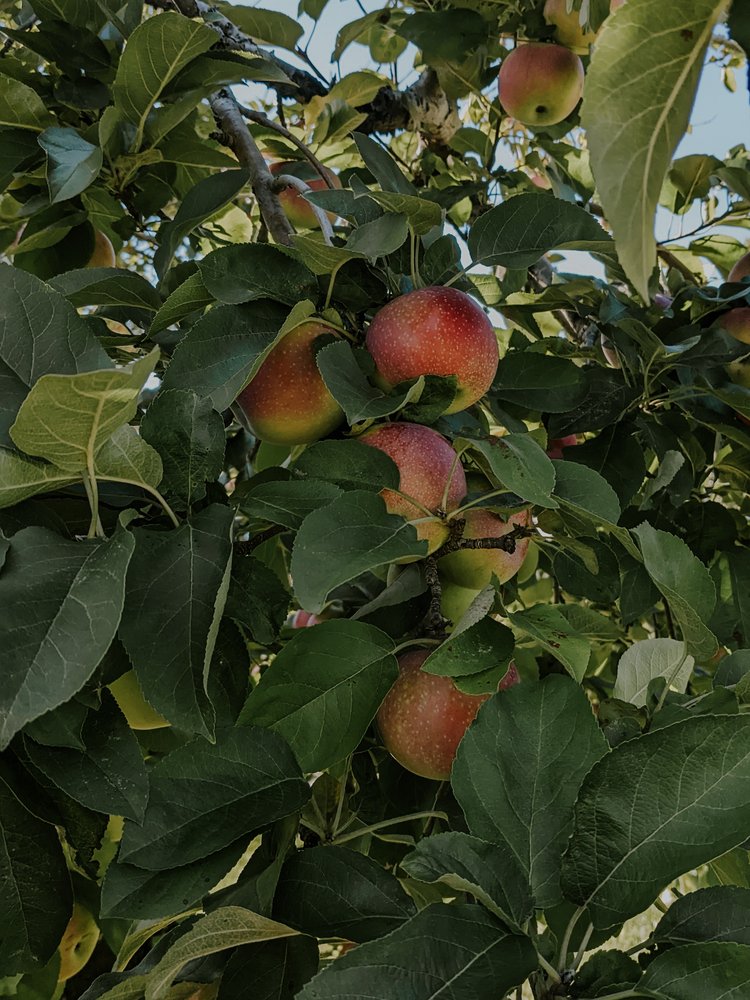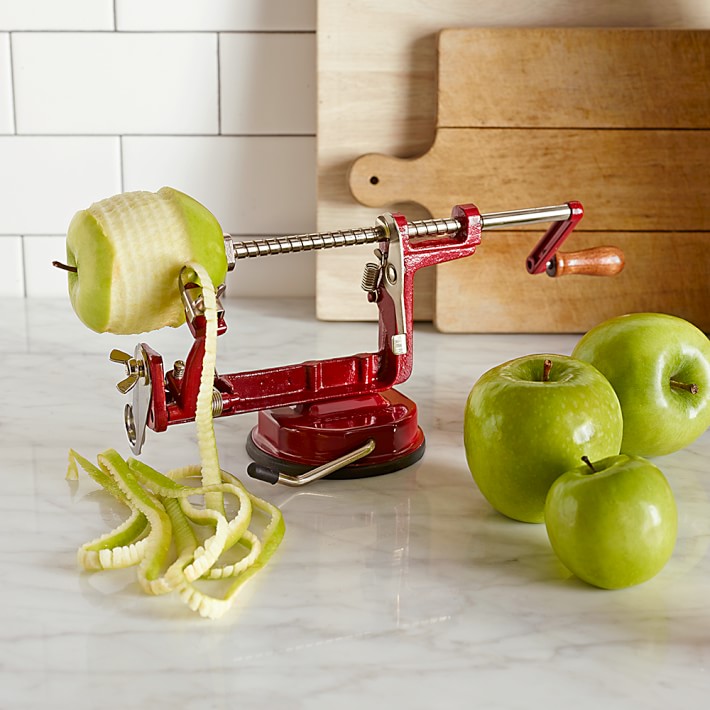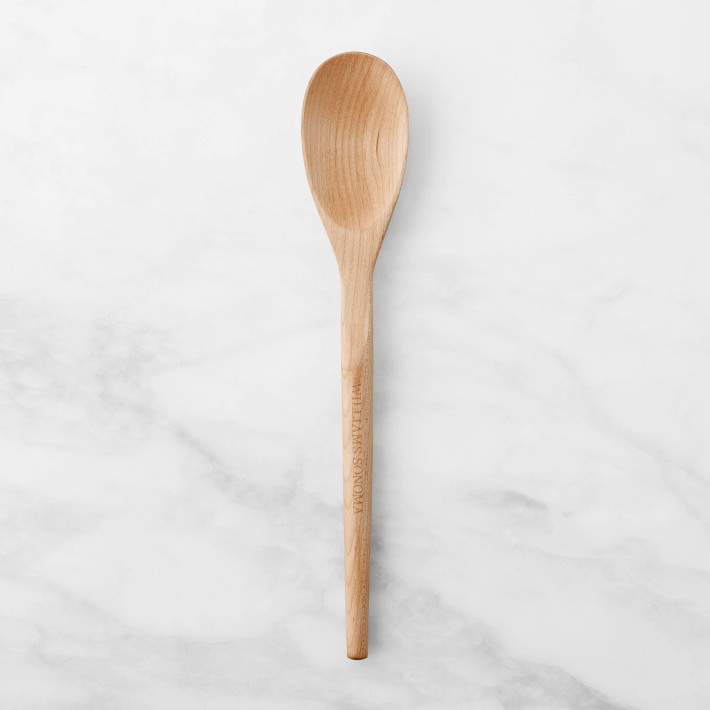Easy Vegan Applesauce Recipe
The Cottage Peach is reader-supported. When you purchase through links on our site, we may earn an affiliate commission at no additional cost to you. All opinions are our own.
When I was a child, my parents got a group of friends together to go apple picking, and a tradition was born. For over 20 years we traveled to Honey Pot Hill Orchard in Stowe, Massachusetts. Honey Pot has 186 acres of orchard land, and has been run by the same family since 1926. Its trees are planted on rolling hills with wide lanes between them, and have orchard ladders leaning against them just waiting to be climbed.
We traveled the orchard in a pack, balancing on each other’s shoulders to reach the perfect apple far overhead, steadying ladders, and filling increasingly heavy bushel bags with more apples than they could reasonably hold.
We ran down hills and took pictures and laughed and smelled the unique-to-orchards, sweet aroma of fallen apples fermenting in the grass beneath the trees.
At the end of the day, we made our way through the hills to the farm store for a gallon of cider to drink and a gallon of cider to bring home, and to the bakery window where we bought bags and bags of cinnamon-sugar coated cider donuts.
We’d plop ourselves down on a grassy hill nearby to munch and drink and watch the people standing in the long line for donuts. Every visit was the perfect day.
Why Go Apple Picking?
Aside from experiencing the perfect day, why go apple picking at a farm instead of buying apples at the grocery store? Taste is one reason. An apple from the grocery store is likely to be a year old.
Store-bought apples last so long because waxes and chemicals are applied by producers. Insecticides and fungicides are put on the apples to protect them from insects and bad bacteria, allowing the apples to stay ‘fresh’ when kept in cold storage.
In contrast, an apple picked from a tree on a sunny, cool day is a food unto itself.
More importantly, we need farms and orchards. If we just buy fruits and vegetables from a grocery store, we may lose the remaining farms we have.
The majority of a farm’s income comes from seasonal activities. Apple picking with cider and donuts, pumpkin picking with hay rides and corn mazes, vegetable farms transformed in winter to sell Christmas trees and wreaths, these are the ways a farm survives.
When we fill a bushel bag and grab a gallon of cider, we are benefiting both the farm and ourselves, our environment and our culture.
Why Pick a Lot of Apples?
Nutrition and taste, of course, but also because apples are so versatile.
We can eat apples fresh, use them in pie or cake, make applesauce, or slice them into rings and dehydrate them for a crispy snack. We can make apple butter, add slices to a grilled cheese sandwich, and use them to create stamps for painting projects.
They can speed up the ripening of other fruits if we’re feeling impatient, help reduce inflammation when used as a face mask, and can even be used to make spooky shrunken heads to keep the kids entertained.
What Kinds of Apples Store Longest?
If you buy a few apples at the grocery store, you might keep them in a bowl on your counter or, to make them last a bit longer, store them in your refrigerator.
But if you have a large quantity that you want to eat over the course of a few months, a different storage solution is required.
The first two steps in storing apples that will last are done at the orchard. First, choose apple varieties that are crisp and tart, with thick skin.
Apple varieties that store well:
Granny Smith
Honeycrisp
Northern Spy
McIntosh
Fuji
Winesap
The second thing that should be done at the tree if you want to store apples long-term is to harvest them properly. Apples should be twisted from the branch, not pulled, and they need to be handled very carefully, like eggs, so they don’t develop bruises.
Choosing Which Apples to Store:
Once you’re back home, you want to choose the best of your apples to store.
Choose apples with stems. An apple without a stem is easier for microorganisms to enter, where they will cause the apple to decay.
Choose apples with no blemishes, soft spots, or bruises. A bruised apple will cause the apples around it to rot. Like they say, one rotten apple spoils the bunch.
Where to Store Apples
Traditionally, apples were stored, along with other fruits and vegetables, in a root cellar. Most people don’t have a root cellar these days, but we can look at what is valuable about a root cellar and mimic those conditions as best we can.
The fact that root cellars are dark and cold is what allows for a longer shelf-life for apples. Apples like a temperature above 32 degrees and below 38 degrees best. But we don’t need to have the ideal spot and temperature to keep apples for months.
An unheated basement, an attached garage where the temperature doesn’t fall below 32 degrees, or a closet in a cool room are all good spots to store your apples to extend their shelf-life.
How to Store Fresh-Picked Apples
Wrap each apple lightly in paper.
Gently layer the apples in a small wooden crate or cardboard box. Be careful not to bruise the apples or let them sit in direct contact with each other.
You’re going to want to check on your apples once a week to make sure there aren’t any that are bruised or rotting, so make it easy on yourself by spreading them out into a few different containers.
Alternatively, if you plan to store lots of apples regularly, you can purchase an apple storage rack.
Other Ways to Store Apples Long-Term
Apples can be frozen, although they will lose their crisp texture and will be better suited for use in apple pie or apple butter than for eating directly.
To freeze apples, cut them up, toss them with lemon juice, and pat them dry with a clean cloth. You can then put them directly into a freezer bag, or you can flash freeze them on a cookie sheet and move them to a freezer bag once they have frozen. Flash freezing minimizes the chance the fruit will stick together in a solid block.
Apples can also be canned using a water bath.
Why Make Homemade Applesauce?
Making homemade applesauce allows you to control both the taste and the texture of the sauce. Like your applesauce to be very smooth? Puree it. Like your applesauce lumpy? Just skip the puree.
Cinnamon, strawberries, maple syrup, vanilla bean, orange peel, even cayenne pepper – the flavoring options for applesauce are endless.
Making applesauce can also be an even longer-term way to store apples.
The Secret To Making the Best Applesauce
The number one best thing you can do to make the perfect applesauce is to use more than one kind of apple. Using two or more varieties adds a depth of flavor which you will not find at the store. Experiment with different variety combinations to find the ones you love the most.

Easy Vegan Applesauce
Ingredients
- 8 Apples (or as many or few as you’ve got)
- 1-2 TBSP Sugar (optional - I prefer raw sugar for this recipe)
- Splash of water (depending on your preferred thickness)
- Cinnamon, strawberries, maple syrup, vanilla bean, orange peel, even cayenne pepper – the flavoring options for applesauce are endless.
Instructions
- Cut the apples into chunks, peeled or not, depending on what you like.
- Put the cut up apples in a pot.
- At this point you can add a small splash of water to keep them from sticking to the pot before their juice starts to flow. Alternatively, you can watch them very carefully and stir them while they heat up.
- When the apples have made some juice, add sugar to taste.
- Cook on medium-high heat, stirring occasionally.
- If you find your apples are sticking to the bottom of the pan, turn down the heat and/or add a splash of water.
- When the apples are soft enough to break with the back of a spoon, remove the pot from the heat. For 8-10 apples, this might take about 10 minutes from when they begin to boil. For greater quantities, it will take a bit longer.
- Taste the sauce again and stir in more sugar if you’d like.
- If you want a smooth applesauce, puree it with an immersion blender.
- If you’d like a chunky applesauce, you can leave it as is, or smash it a bit with a fork or potato masher.
Notes
You can let your applesauce cool and store it in the fridge in an airtight container or jar.
If you’d like to extend its storage life, though, applesauce is the perfect food for a beginner to try canning.
Nutrition Facts
Calories
104.09Fat
0.36Sat. Fat
0.06Carbs
27.5Fiber
4.44Net carbs
23.06Sugar
21.21Protein
0.5Sodium
3.4Cholesterol
0How Many Apples Do I Need to Make Applesauce?
The great thing about this recipe is, it’s more of a formula. There is no set number of apples you need to make applesauce. You can make it with one apple or a hundred. (If you have a big enough pot!)
In general, it takes 8 medium-sized apples to fill a jar the size of the bigger jar (not the huge jar) available at the grocery store.
Easy Homemade Applesauce Recipe
This applesauce recipe is easy, vegan, and a great beginner recipe for kids and adults. I think it’s the best applesauce recipe, because it is so simple, and requires only 1 or 2 ingredients (depending on whether you want to sweeten it).
It gives you a base from which you can create your very own, favorite applesauce.
You can leave them unpeeled or peel your apples before chopping. Add your apples to the sauce pan and cook until soft.
How to Store Applesauce
You can let your applesauce cool and store it in the fridge in an airtight container or jar.
If you’d like to extend its storage life, though, applesauce is the perfect food for a beginner to try canning.
Ways to Use Applesauce
Applesauce can be used to flavor muffins, cakes, and breads.
It can also be used to replace oil in baking recipes, where it will add a bit of moistness to your bake.
Applesauce is a delicious and nutritious snack or dessert.
As the Brady Bunch taught us, applesauce is the perfect side dish for pork chops.
Warm applesauce is a nice topping for a sundae.
Applesauce on oatmeal is absolutely yum.
Traditionally, latkes are eaten with applesauce and sour cream.











